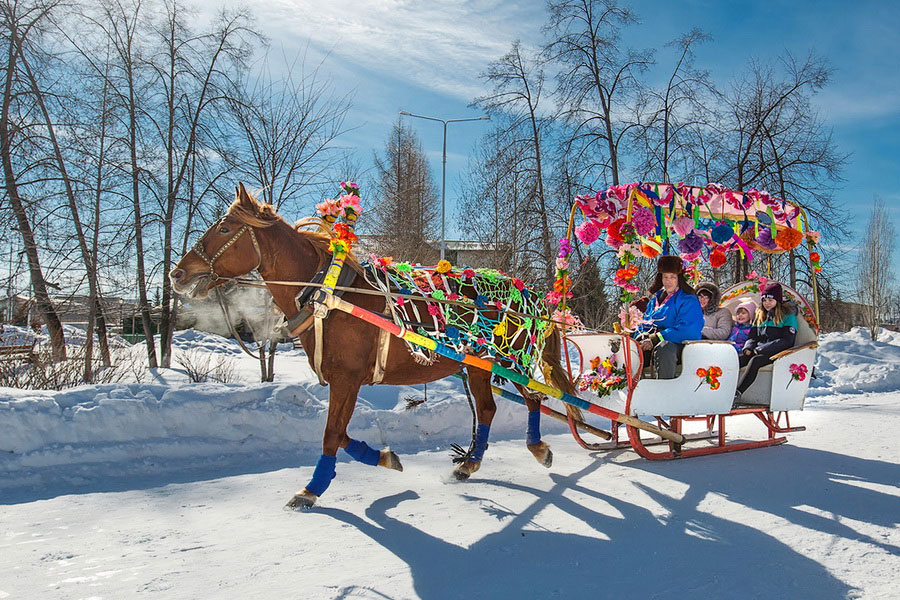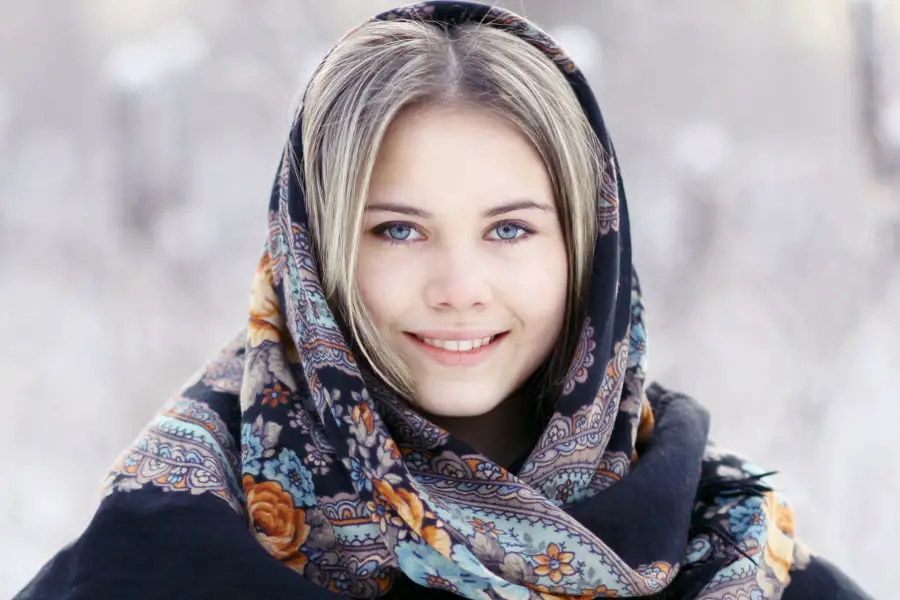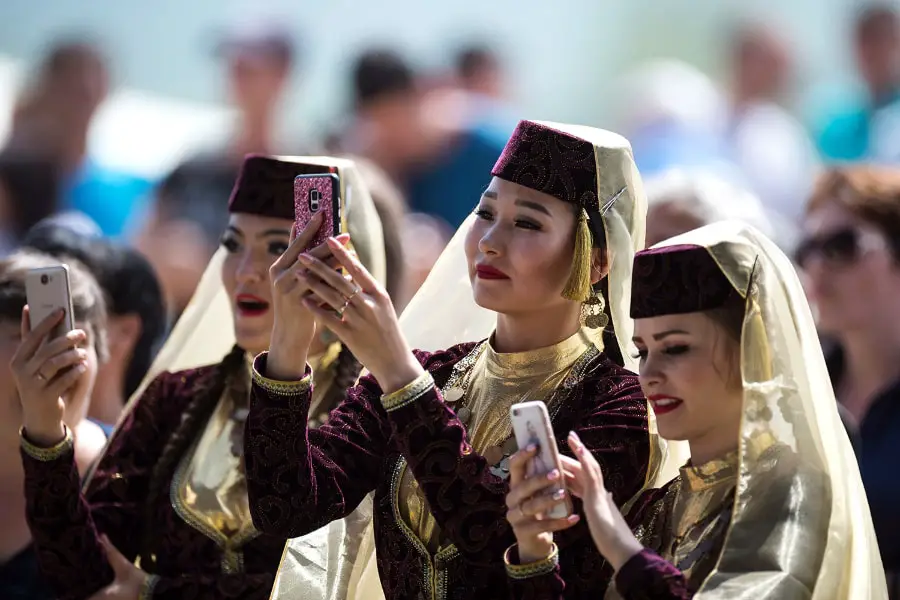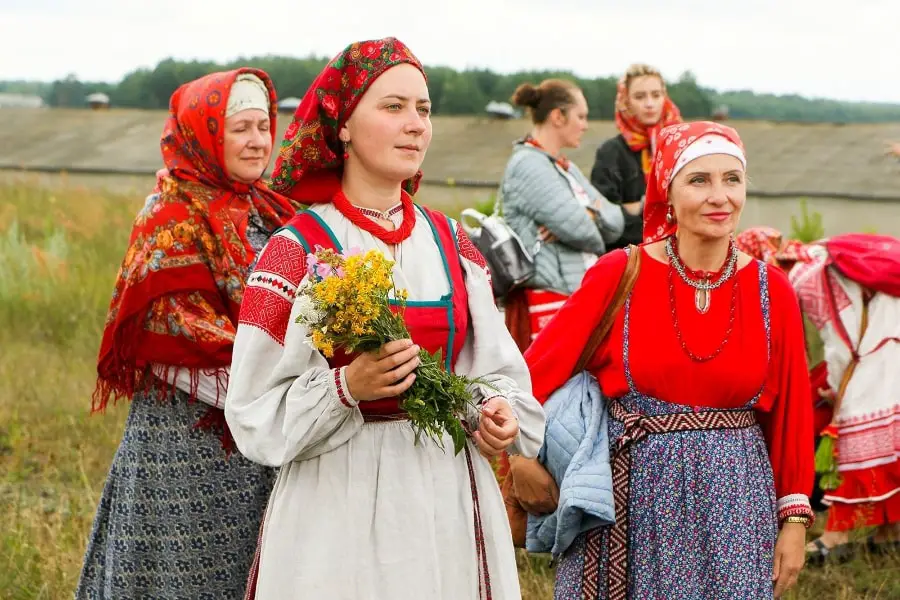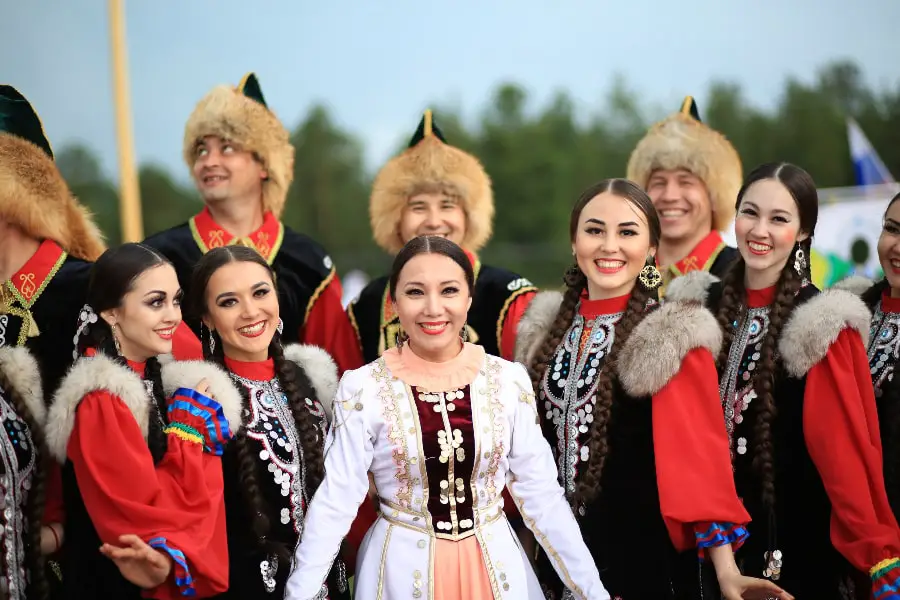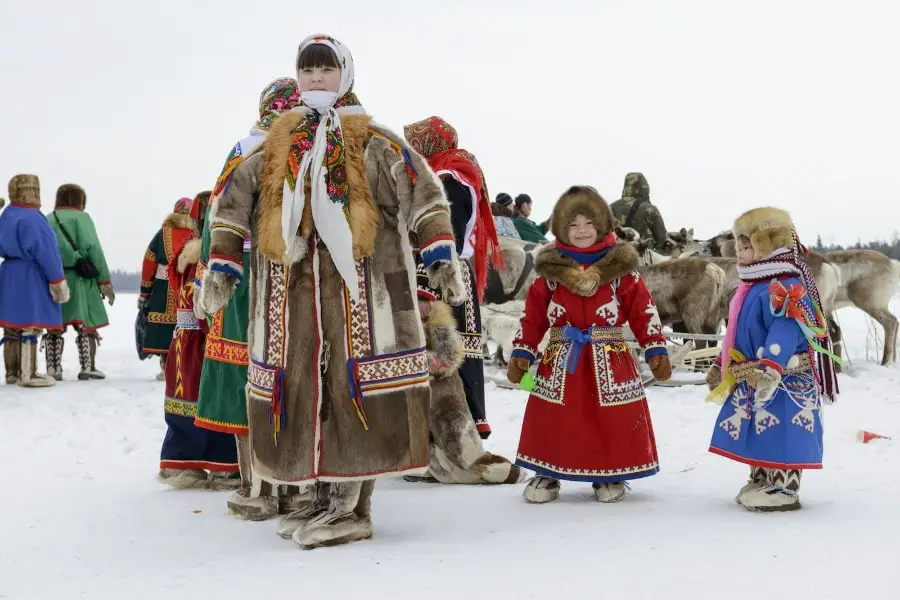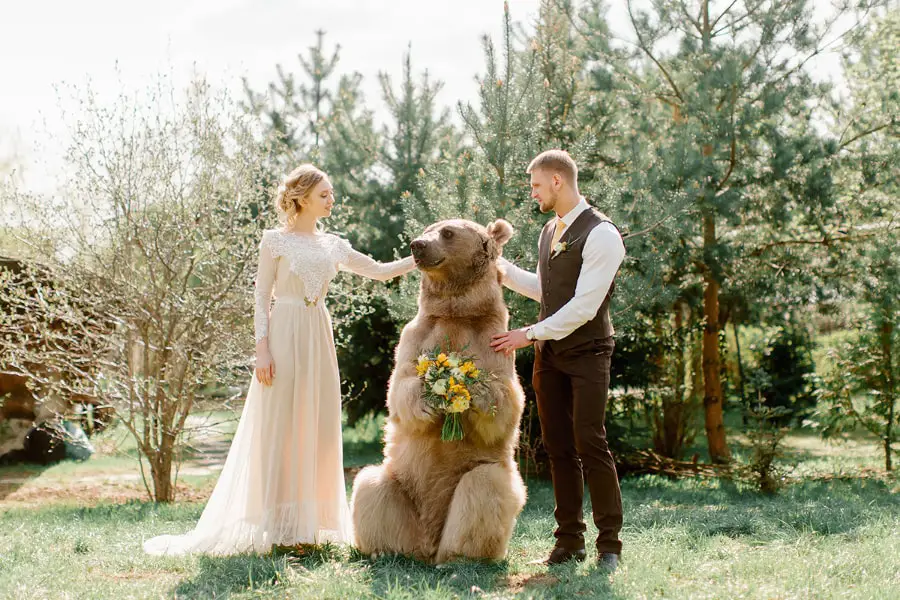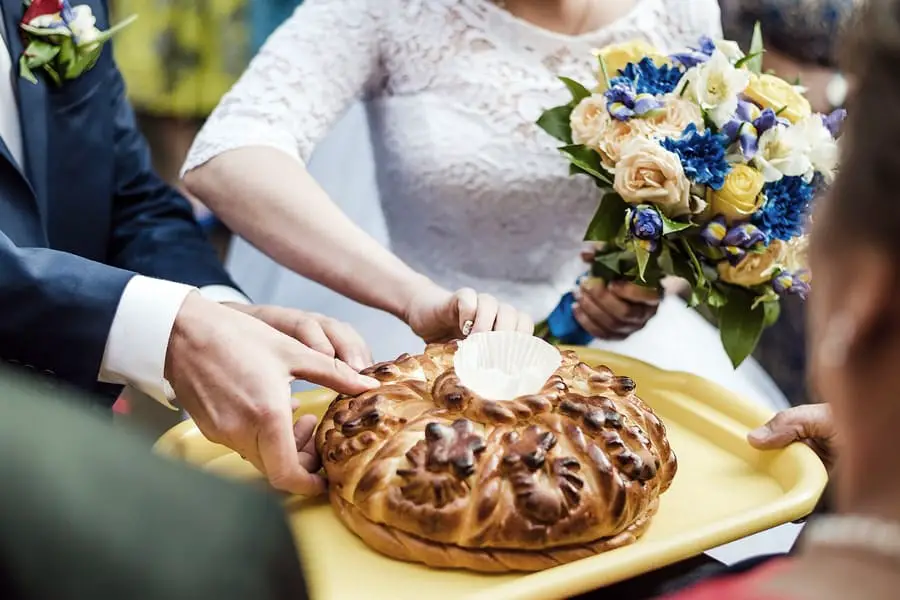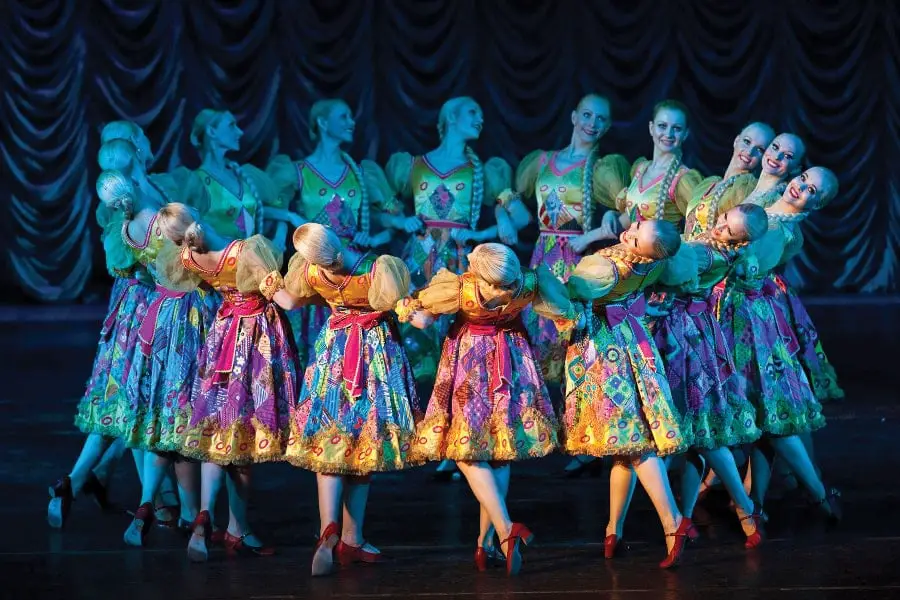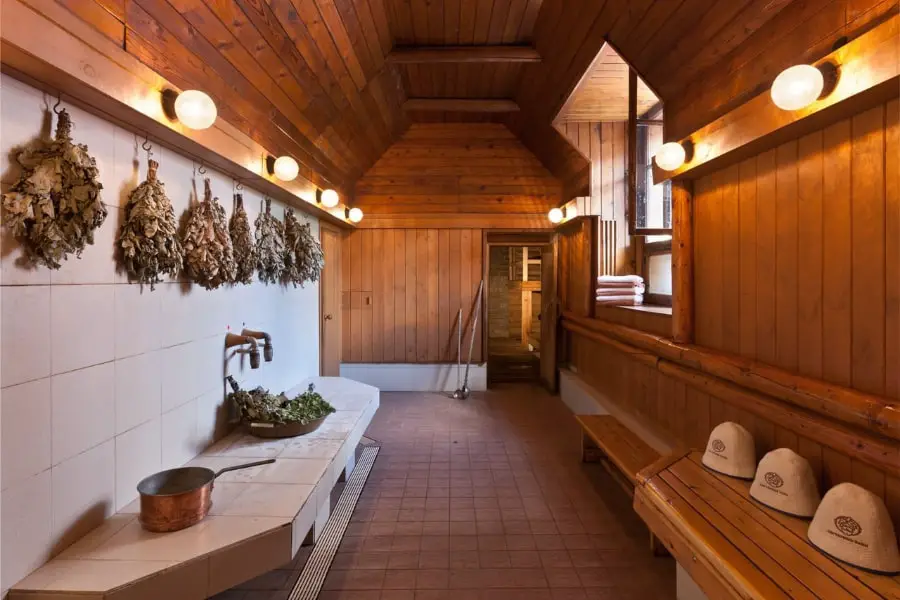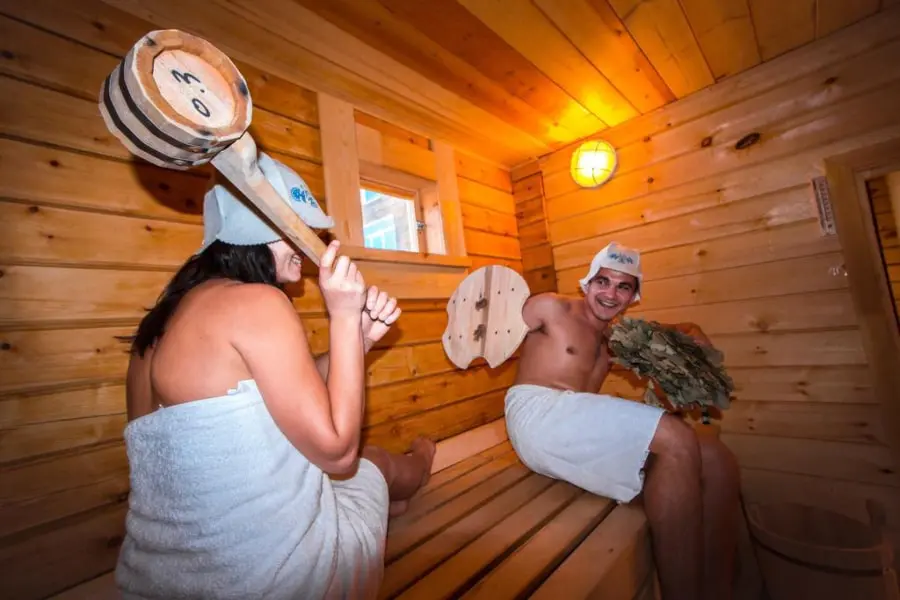Представлено сочинение на английском языке Традиции в России/ Traditions In Russia с переводом на русский язык.
| Traditions In Russia | Традиции в России |
| Every nation has its own culture and traditions. Russia is a unique country with a centuries-old history and long-established national customs. Although, it’s a well-developed country with a high level of culture, most holidays and traditions date back to pagan times. | Каждый народ имеет свою культуру и традиции. Россия является уникальной страной с многовековой историей и устоявшимися национальными обычаями. Несмотря на то, что это хорошо развитая страна с высоким уровнем культуры, большинство праздников и традиций восходят к языческим временам. |
| For example, Easter, Christmastide, the Kupala Night, the Shrovetide — all these events have pagan roots. I’d like to say a few words about these holidays and traditions of their celebration. | Например, Пасха, Святки, ночь Купалы, Масленица — все эти события имеют языческие корни. Я хотела бы сказать несколько слов об этих праздниках и традициях их празднования. |
| Easter in Russia is a glorious feast of Christ’s resurrection. It came from Byzantium at the end of the 10th century. Since then, this holiday is widely celebrated throughout the country with beautiful and solemn rites, such as eggs’ colouring, kulich baking, paschal greeting, etc. | Пасха в России является светлым праздником воскресения Христа. Она пришла из Византии в конце 10-го века. С тех пор, этот праздник широко отмечается по всей стране красивыми и торжественными обрядами, например, окраской яиц, выпечкой кулича, пасхальным приветствием и т.д. |
| There are many interesting events during the Christmastide. Traditionally Russians have kept a 40-day fast before Christmas. On Christmas Eve they’ve prepared a delicious meal known as “kutia”. It’s a porridge made of wheat or barley and mixed with honey. Today, people use rice and dried fruits to cook this dish. On the night of Christmas it was habitual to visit the relatives and neighbours, to eat kutia and sing carols. Young girls would also arrange fortune-telling nights. Most devout people have spent days at the church. | Довольно много интересных событий во время святок. Традиционно россияне держали 40-дневный пост перед Рождеством. В канун Рождества они готовили вкусное блюдо под названием «кутья». Это каша из пшеницы или ячменя, смешанная с медом. Сегодня люди для приготовления этого блюда используют рис и сухофрукты. В ночь на Рождество было принято посещать родственников и соседей, кушать кутью и петь колядки. Молодые девушки также устраивали ночные гадания. Большинство набожных людей все эти дни проводили в церкви. |
| On the Ivana Kupala, which falls on midsummer night, people arrange posh celebrations. On this day young girls wear flower wreaths on their heads and sing songs, referencing to love and marriage. | На праздник Ивана Купала, который приходится на середину лета, люди устраивают шикарные торжества. В этот день молодые девушки надевают на голову венки и поют песни о любви и браке. |
| The Shrovetide used to be a holiday of commemoration of the dead. Today, Russians associate this day with the end of winter. They burn a scarecrow and other unnecessary things on this day. They also cook lots of pancakes and organize costumed performances. | Масленицу раньше праздновали в честь поминовения усопших. Сегодня россияне ассоциируют этот день с окончанием зимы. В этот день они сжигают чучело и другие ненужные вещи. Они также пекут много блинов и организовывают костюмированные представления. |
| There are many other traditions in Russia, connected with christening, wedding, funerals, etc. But if you want to get a better understanding of this country, you should visit it during the main religious holidays. | В России есть много и других традиций, связанных с крещением, венчанием, похоронами и т.д. Но для лучшего понимания страны, следует посетить ее во время основных религиозных праздников. |
- 13.11.2018
Тема по английскому языку: Русские традиции
Топик по английскому языку: Русские традиции (Russian traditions). Данный текст может быть использован в качестве презентации, проекта, рассказа, эссе, сочинения или сообщения на тему.
Древние традиции
Россия – уникальная страна, которая сохраняет национальные традиции, уходящие корнями не только в христианскую религию, но и в язычество. Христианство дало России такие великие праздники как Пасха и Рождество. А язычество – Масленицу. Древние традиции передаются от поколения к поколению.
Новый Год в России
Новый Год – самый большой праздник для русских. Считается, что как встретишь Новый Год, так его и проведешь. В канун Нового Года накрывают большой стол с изобилием блюд.
Пасха
Пасха – это воскрешение Христа. Главная традиция Пасхи – покраска вареных яиц. Преобладающий цвет – красный, так как он означает новую жизнь. На Пасху русские обмениваются яйцами и теплыми пожеланиями.
Рождество
Рождество – это праздник рождения Иисуса Христа, который отмечается 7 января. Перед Рождеством люди обычно убирают свои дома. Праздничный стол для Рождества готовится за несколько дней с индейкой, фаршированной свининой, пирогами, кондитерскими изделиями и сладостями для детей.
Масленица
Масленица – один из самых веселых праздников в России. Он знаменует конец зимы и открытие новых весенних фестивалей и торжеств. Масленица празднуется в течение недели, предшествующей посту. Каждый день Масленицы посвящен особым ритуалам.
Семейные традиции
Существуют различные интересные семейные традиции. Например, когда рождается ребенок, отец должен посадить дерево и пожелать ребенку вырасти сильным и здоровым.
Благословление
Среди традиций, связанных с бракосочетанием есть такая как благословление. Когда невеста и жених готовы поехать в церковь, старейший член семьи берет со стены икону. Пока невеста и жених стоят на коленях, он крестит их этой иконой, благословляет их союз и желает долгого и счастливого брака. На церемонии бракосочетания муж и жена берут большой каравай хлеба и одновременно кусают его. Считается, что тот, у кого окажется кусок больше, будет главным в семье.
Скачать Топик по английскому языку: Русские традиции
Russian traditions
Old traditions
Russia is a unique country, which preserves the national traditions deeply rooted not only in the Orthodox religion but also in paganism. Christianity gave Russians such great holidays as Easter and Christmas, and Paganism – Maslenitsa, which means Pancake Day. Old traditions are passed on from generation to generation.
New Years day in Russia
New Years day is the biggest celebration for Russians. It is believed that the way you celebrate the New Year indicates how your year will be. On New Year’s eve, a huge meal is prepared with an abundance of dishes.
Easter
Easter is the day of the resurrection of Christ. The main tradition at Easter time is the painting of hard-boiled eggs. Red is the predominant colour, as it signifies new life. Russians exchange eggs and kind wishes for the Easter celebration.
Christmas
Christmas is the holiday of the birth of Jesus Christ, which is celebrated on the 7th of January. Before Christmas Eve, people tidy their houses. The food for Christmas is prepared some days in advance, with turkey, stuffed pork, pies, pastries and sweets for children.
Maslenitsa
Maslenitsa is one of the most cheerful holidays in Russia. It marks the end of the winter and the opening of new spring festivals and ceremonies. Maslenitsa is celebrated during the week preceding the Lent. Every day of Maslenitsa is devoted to special rituals.
Family traditions
There are some interesting family traditions. For example, when a new baby is born, the father should plant a tree, wishing the child to grow up strong and healthy.
Blessing
Among the traditions connected with wedding is blessing. When a bride and groom are ready to go to the church, the oldest member in their family takes a religious icon from the wall. While the bride and groom kneel, the family member crosses them both with the icon, blesses their union, and wishes them a long and happy marriage. At the wedding reception, the husband and wife take a big loaf of bread and bite it at the same time, without the use of their hands. Whoever gets the larger piece, it is said that they will be the leader of their family.
- Home
- Russia
- Traditions
Centuries-old traditions and customs of the Russian people
Russia is indeed a unique country, which, along with highly developed modern culture carefully preserves the national traditions deeply rooted not only in the Orthodox religion but also in paganism. The Russians still celebrate pagan holidays, many people believe in numerous omens and legends.
Christianity gave Russians such great holidays as Easter and Christmas, and Paganism – Maslenitsa (Shrovetide) and Ivan Kupala. Old traditions are passed on from generation to generation.
Easter
Easter is the day of the resurrection of Christ. The holiday came to Russia from Byzantium together with Russia’s christening in the end of the 10th century. Since then, this Christian holiday has been widely celebrated all over Russia.
Christmas
Christmas is the holiday of the birth of Jesus Christ, the Savior of the world, whose advent gave people hope for mercy, kindness, truth and eternal life. The Orthodox Church observes Christmas according to the Julian Calendar, on January 7, while Western churches celebrate it on December 25, in accordance with the Gregorian Calendar.
- Nativity Fast
- Christmas Eve
- Twelve days of Christmas
- Epiphany
Ivan Kupala
Even in the time of the ancient pagan deity Ancient Russians used to have Kupalo, the God of summer fertility. In his honor people of sang songs and jumped over the bonfire. This ritual act has become an annual celebration of summer solstice, combining a pagan and Christian traditions. Kupala got the name Ivan after the baptizing of Russia, when he was replaced by John the Baptist (the way he was percepted by common people), who baptized Christ and whose birthday was celebrated on 24 June.
Maslenitsa — Old Russian Tradition
In the old days Maslenitsa was for remembrance of the dead. So the burning of the figure of Maslenitsa means her funeral, and blini (pancakes) – coliphia. But with time the Russians longing for fun and entertainment turned the sad holiday into jolly Maslenitsa with blini — round, yellow and hot as the sun, sledding and horse sleigh riding, fistfights and mother-in-law chatting. The rituals of Maslenitsa are very unusual and interesting because they combine the end of the winter holiday rituals and the opening of new spring festivals and ceremonies, which were to promote a rich harvest.
Wedding
Among the Russian traditions, the wedding has always been a some kind of performance with a kind share of improvisation that is why it could be different eve in two neighboring towns. Yet, despite these differences, there was a certain order of wedding ceremony that repeated from village to village, from town to town.
- Matchmaking
- Engagement
- Bridal Shower
- Wedding Ranks
- Wedding Train
- Wedding Rituals
- Church Wedding Ceremony
- Meeting of Newlyweds
- Главная
- Топики
- Праздники и традиции
Almost every nation and country has a reputation of some kind. The Englishmen are reputed to be cold, reserved, easy-going and fond of sport. They are the nation of stay-at-homes. «There is no place like home», they say. The English man’s home is his castle is a saying known all over the world. They prefer a small house built for one family, with a small garden are a fire in the centre of the house. They like animals very much and follow the traditions concerning food and meals. We know much about English traditions and customs but now I’d like to say a few words about the traditions of my native land — Russia.
To my mind, the main traits of their characters which differ them from other people are hospitality, their «open heart», «golden hands», wise Russian fairytales reflect this wisdom. Our people are hardworking, patient, never loosing hope for better life. The Russians are the talented nation. Russia gave the world beautiful names of Pushkin and Lermontov, Chaikovsky and Repin, thousands of names of world famous poets, writers, composers, scientists. All of them are the pride of the nation because they sand the beauty of our nature and people.
Besides these great names in literature and music, our country is famous for Russian traditional specific crafts its skilled craftsmen. Painted boxes of Palekh, coloured shawls of Pavlov Posad, clay toys of Dymkovo, laces of Vologda are known all over the world. The names of Gzhel and Khokhloma are considered to be the symbols of Russia as well as matryoshkas and samovars. The history of khokhloma goes back into the 17th century Producing of tableware-dishes, spoons, mugs was begun at that time in the villages of Suomino and Khokhloma in the Nizhniy Novgorod Province. On the banks of the great Russian river Volga. Many carpenters, painters have been working since then reviving traditions of old masters. The Khokhloma style is characterized by using plant elements in painting the tableware. The prevailing colours are black, yellow, golden, green and red. And nowadays this craft is sure to be saved, it will be developed and brought into the future by the new generation of painters. The reviving of old crafts is connected with the reviving of the traditional arts of all peoples inhabiting our big country. There are 100 of them. They revive their culture, costumes, dances and language. It is the revival of our souls. Now we celebrate the forgotten holidays — Troisa, Maslenitsa, Easter. We again sing Russian folk songs and chastushki, dance Barinya and perform khorovods, ride in troikas.
Traditional Russian cooking is world-famous for such dishes as okroshka, shi, pelmeny, kurnik, kvas.
We begin to build and reconstruct churches as well. The example of it is the building of the Cathedral of Christ the Savior in Moscow. It is the symbol of reviving human feelings, national pride and patriotism.
Версия для печати
If you’re prepared to put in a bit of effort to know about Russian traditions, Russia’s unique culture, customs and the many strange and wonderful personality quirks unique to the Russian psyche, you’ll find travelling around Russia infinitely more rewarding.
Interacting with local people gives you the chance to really connect with the Russian way of life through a shared appreciation and understanding of their culture, and the ways it is both strikingly similar and wildly different to own. While this guide aims to cover the basic do’s and don’ts of travelling in Russia, the most important thing to remember is that Russians are extremely proud people. Any attempt to embrace the language and culture they hold so dearly is likely to be met with great enthusiasm and encouragement.
Russian Traditions & Culture – Overview
Russian traditions & cultural life is made up of many things, drawing on a rich, fascinating and ancient history, strong ties to tradition and a vastly influential body of Russian art and literature. The Russians are understandably proud of their culture. During the Soviet era, many customs and traditions from Russia’s imperial past were suppressed and life was strictly controlled and regulated by the state.
After Mikhail Gorbachev’s reforms in the 1980s, Russian traditions began to reappear and customs, art and education were once again upheld as an important part of the Russian identity. Ingrained the Russian psyche is a great reverence for the endurance of the national culture, despite its many hardships and setbacks. Russians pride themselves on being able to survive where others could not, and patriotic songs are sung with gusto by almost every Russian.
Understandably, there’s a widening cultural gap between the older folk in Russia who lived through the Soviet era and the younger generation who’ve embraced the new, cosmopolitan Russia. Even so, there are traditional Russian values and core beliefs shared on every level of society, including: adoration of children, respect for the elderly, a sense of humour, the importance of friendship, generosity, pride, patriotism, a love of the arts, nostalgia, self-sacrifice, conservatism, caution, collectivism, and to a degree, pessimism and cynicism.
Russian Language
Over 80% of Russia’s estimated population of 150 million speak Russian as their first and only language. Most speakers of a minority language are also bilingual speakers of Russian.
Russians now learn English as a second language at school, and you’ll find many English speakers in Moscow in St Petersburg, especially among the younger generations. Outside of the major cities, meeting fluent English speakers is less common, and you’ll find knowing a few key words and phrases in Russian infinitely useful.
Russian Traditions, Manners & Etiquette
Greetings
The typical Russian greeting is a firm handshake while maintaining direct eye contact. Males will shake a female’s hand a little less firmly. When female friends meet, they kiss on the cheek. A meeting between close male friends often begins with a pat on the back and a hug.
Russian Naming Conventions
Russian names are comprised of:
- A first name, which is the given name
- A middle name, which is a patronymic, or version, of the father’s first name. It’s formed by adding ‘-vich’ or ‘-ovich’ for a male, and ‘-avna’ or ‘-ovna’ for a female. The son of Mikhail’s patronymic name would be Mikhailovich. His daughter’s patronymic name would be Mikhailovna.
- Last name, which is the family name or surname – In formal situations, people are addressed by all three names. Friends and close acquaintances may refer to each other by the first name and patronymic.
- Close friends and family members call each other by first name only.
Gift Giving Etiquette
- If you are invited to a Russian home for a meal, bring a small gift.
- Male guests are usually expected to bring flowers. Don’t bring yellow flowers, as some Russians see them as signifying separation or betrayal.
- Do not give a baby a gift until after the baby is born. It’s bad luck to do so sooner.
- Russians often protest when they are offered a gift. Replying that “it’s just a little something” and offer the gift again and it will usually be graciously accepted.
Dining Etiquette
If you are invited to a Russian’s house:
- Arrive on time or no more than 15 minutes later than invited.
- Take off your shoes. You may be given slippers to wear.
- Dress well – smart casual, or businesslike is usually OK. Dressing well shows respect for your hosts.
- Expect to be treated with honour, respect and generosity
- Offer to help the hostess with preparation and clearing up after the meal. This may be turned down out of politeness, but a bit of light persistence is OK to get her to accept her offer.
- Table manners are Continental – a fork in the left hand and the knife in the right.
- The oldest or most honoured guest is served first
- Do not begin eating until the host invites you to start – Do not rest your elbows on the table.
- Russians tend to put on an overwhelmingly generous spread, and you’ll often be urged to take second helpings
- Use bread to soak up extra gravy or sauce
- Men pour drinks for women seated next to them
- Leaving a small amount of food on your plate indicates that your hosts have provided amply. An empty plate signifies that you’re still hungry.
- Do not get up until you are invited to leave the table. At formal dinners, the guest of honour is first to stand up
Do’s & Dont’s When in Russia
Do
- Learn key words and phrases in Russian. Brush up on greetings, numbers, shopping and bargaining words, and how to ask for directions. A few simple conversational phrases that allow you to talk about yourself and ask about others can go a long way towards connecting with local people.
- Pack dressier clothes than you might normally. Russians pay attention to their appearance and tend to be more respectful of well-dressed people. Looking too casual can identify you as a tourist.
- Bring or buy a long black coat if you’re travelling to Russia in winter. It’s an essential item for keeping warm and helps you blend in with the locals! Dressing up for a night on the town is a must.
- Bring a small gift, such as chocolates, flowers, a small toy for a child or a souvenir from home if you’re invited into a Russian household
- Take tissues and liquid soap/sanitiser when you are out and about as many public Bathrooms are not equipped with these facilities
- Dress modestly when visiting churches and other religious places. Women should cover their heads before entering a Russian Orthodox church, and men should take off their hats if they’re wearing one
Don’t
- Leave your shoes on when entering someone’s home. Russian homes, even apartments, are often adorned with expensive rugs, and Russian streets are often dusty. Shoes and expensive floor coverings don’t mix! The host will usually offer a pair of slippers (tapochki) to wear inside, and women sometimes pack a separate pair of ‘indoor’ shoes.
- Overlook the elderly on public transport. Respect for elders remains a strong tradition in Russia, and not giving up your seat for an elderly person who is standing is seen as a grave offence – expect the entire bus to look at you like you’re a criminal! The same rule applies for pregnant women, and Russian men will often give up their seat for a woman regardless.
- Burp in public! Your bodily functions are considered private affairs, so do your best to keep them to yourself and avoid causing offence.
- Take pictures inside churches, unless you’ve asked the staff that it’s OK to do so.
- Ask for a mixer with your vodka. Vodka is practically a holy elixir in Russia and the notion of drinking it with orange juice or soda borders on sacrilege. If you need something to wash it down, you can chase it with lemon, pickles, or a glass of water.
- Be afraid to decline vodka! Just have a religious or health excuse handy. Be aware that when Russians do drink vodka, you’re expected to keep up with them, and they usually drink til the bottle’s empty.
- Be surprised if you’re stopped by the police. Carry a photocopy of your passport, visa and registration and be prepared to present them should an officer ask
- Be afraid to open yourself up to Russian hospitality and try some uniquely Russian experiences. Taste local food and drink, sweat it out at a banya, discover classical ballet and theatre, get amongst it at a local sporting event, participate in a cultural festival and explore the vibrant nightlife of the Russian cities, preferably with a local as your guide.
Tipping in Russia
There are no hard and fast rules when it comes to tipping in Russia. Tipping has traditionally been frowned upon, especially during Soviet times, and many Russians still do not tip. However, tipping culture has grown alongside tourism in Russia, and as a tourist or visitor, it some places there is an expectation that you’ll leave a tip. However, the amount you tip should depend on the level of service provided and you shouldn’t feel obliged to tip if the service was not up to scratch.
Taxis
Usually, you’ll negotiate the price when you
get into the taxi, so there’s no need to tip. If
you don’t, simply round up the fare.
Hotels
Bellboys and porters should be tipped about 50 rubles per bag. You can tip the hotel maid about 90 rubles per day, left by the bed.
Restaurants
For table service, a tip of around 10% to 15% is appropriate if you’re happy with the service.
Bars
If there’s no waiter, you won’t be expected to tip. If you do get table service, around 10% to 15% is appropriate.
Tour Guides & Drivers
If your guide or driver’s service has met your expectations, go ahead and tip them around 5-15% of your tour cost (depending on the value of your tour).
Ethnic Cultures & Religions in Russia
Although Russia is a multi-ethnic and multi-faith nation, the majority of Russians consider themselves Christians, with around 75% of the population belonging to the Russian Orthodox Church. However, the vast majority of Orthodox believers do not attend church on a regular basis.
While most Russians appreciate Christian moral values, they don’t tend to uphold them as strict guidelines, and most Russians live life in a largely secular society. Christian traditions are most visible in Russia during holy days and festivals such as Easter and Christmas, which are as much about gathering together with family and friends as they are about religion.
Russia is home to a diverse array of minority religions, including a Muslim population of around 5%. The indigenous people of Siberia practice an array of ancient religions, with forms of Shamanism and Buddhism still thriving here after hundreds of generations.
Who is Russian?
What does a Russian look like? Ask yourself this question and you’re likely to immediately picture a fair-skinned European who speaks Russian, attends Orthodox mass on Sunday and is a mad fan of football. While football fanaticism may be a common thread that links Russians of all background, the truth is Russia is a diverse, multicultural, multinational state.
Even though outsiders tend to view Russia as quite socially and culturally hegemonies, they are not taking into account the many regional autonomous states, border districts and ancient immigration routes that criss-cross this enormous country. In fact, Russia is home to around 185 distinct ethnic groups or nationalities. Some of these groups consist of just a few thousand people while others form communities of millions, spread across the nation and represented at all levels of government. While Russian is the official state language, over 100 regional languages are spoken throughout the country.
Ethnic Russians make up about 81% of the total population, but several other groups form significant minorities and overtime their populations have spread far and wide between cities and rural villages. Some of the largest ethnic groups include:
Tatars
Tatars are the second largest group in Russia, with a population of over 5 million. They make up the majority of the population of the Republic of Tatarstan. While Tatarstan shares no borders with foreign countries, it has long been considered a place at the crossroads of east and west civilization. Having originated in the Gobi Desert back in the 5th century, today, parts of their culture still intertwine Asian, Central Asian and European elements.
The tatar language belongs to a Turkic language group, and several dialects are spoken throughout Russia. The majority faith of Tatarstan is Muslim, and it’s capital, Kazan, is famed for having some of Russia’s most beautiful mosques.
Ukrainians
The third-largest ethnic group in Russia, Ukrainians make up about 2% of the population – around 1.9 million people. The number of Ukrainians in Russia is continuing to grow, with current numbers of around 340,000 mostly young Ukrainian migrants legally relocating to Russia each year. Although Ukrainians and Russians share many cultural similarities, such as strong adherence to Christianity, their languages, while both Slavic in origin, are significantly different.
It’s commonly assumed that Ukrainian and Russian are mutually intelligible. In reality, Russian is only about 50% mutually intelligible with Russian. Similarly, Ukrainian and Russian cuisine might look quite similar on the surface, but many foods with the same name are actually quite different. Borscht, the beetroot soup beloved all over Eastern Europe, is a proud Ukrainian invention.
Bashkirs
Accounting for around 1% of the population, another the third-largest ethnic group in Russia primarily live in Prem Krai, Orenburg and Kurgan, as well as in Ukraine and Uzbekistan. Bashkir is a Turkic language, differing only in dialect to the Tartar languages. The Bashkirs share similar cultural practices with many other Turkic peoples. The majority of Bashkirs identify as Sunni Muslim. Traditionally, the Bashkirs were nomadic herdsman, but today the vast majority live and work in permanent settlements.
The list of biggest groups of nationalities in Russia is below:
- Tatars – 5 554 601 (3.83%)
- Ukrainians – 2 942 961 (2.03%)
- Bashkirs – 1 673 389 (1.15%)
- Chuvash – 1 637 094 (1.13%)
- Chechens – 1 360 253 ( 0.94%)
- Armenians – 1 130 491 (0.78%)
- Mordovians – 843 350 (0.58%)
- Avars – 814 473 (0.56%)
- Belarusians – 807 970 (0.56%)
- Kazakhs – 653 962 (0.45%)
- Udmurts – 636 906 (0.44%)
- Azerbaijanis – 621 840 (0.43%)
- Mari – 604 298 (0.42%)
- Germans – 597 212 (0.41%)
- Kabardins – 519 958 (0.36%)
- Ossetians – 514 875 (0.35%)
- Dargins – 510 156 (0.35%)
- Buryats – 445 175 (0.31%)
- Yakuts – 443 852 (0.31%)
Indigenous People of Russia
The indigenous peoples of Russia refer to the early tribes living in the far north, central and southern regions of Siberia as well as parts of the Russian Far East. Forty-one groups are legally recognised as “Indigenous small-numbered peoples of the North, Siberia and the Far East”, a status which gives them certain legal protections, as long as their population numbers less than 500,000 people and they maintain a relatively traditional way of life.
Some of the best known indigenous groups in Russia, such as the Sakha (Yakuts), the Buryat, Komi and Kakhas are disqualified from these protections because of their larger populations. Some groups are currently fighting for greater recognition to help them protect and preserve the customs, culture, folklore, religion and way of life they have forged out themselves in some of the harshest and most extreme environments on earth.
As a traveller, you may wish to learn more about how the country’s Indigenous people are trying to keep their identities alive in a rapidly-changing Russia. Experiences, like joining the reindeer migration with the nomadic Nenets in Yamal or learning the basic tenants of Shamanism with Buryats in Lake Baikal, help bring outside awareness to these fascinating and ancient cultures and demonstrates in part the importance of preserving these precious cultural assets for future generations.
Russian Weddings – Customs & Traditions
The classic Russian wedding has long had a reputation for being, some might say, a little over the top. If you’re ever lucky enough to be invited to a real Russian wedding, one thing you can count on is having a lot of fun. And we do mean a lot.
Typically, Russian weddings are infamous for being huge, loud, raucous events. Not only does a Russian wedding involve copious amounts of drinking, enough food to feed to several former states of the USSR and almost non-stop singing and dancing, but the average Russian wedding reception also lasts for two days minimum. Sometimes the party keeps going for an entire week.
The logical explanation for this excess exuberance is simply that Russians are party people. They love nothing more than gathering with friends and family around a giant feast, with plenty of drinking, song and entertainment. A wedding just happens to be the perfect excuse for such an extravagant affair.
On top of that, hundreds upon hundreds of attendees is quite normal, since in Russia family doesn’t stop at your immediate relatives. Extended families, near and even distant relatives are all invited with a second thought.
Trends vs Traditions
Tradition, particularly when it involves family is still extremely important in Russia and customs, rituals, beliefs and social practices still figure heavily in almost every Russian wedding. These days though, the Russian wedding is often a bit of a hybrid, as couples borrow bits and pieces that appeal to them from contemporary European or American-style weddings.
In olden times, Russian couples tended to marry at a much younger age and thus, the mother and father of the groom would have to seek permission from the bride’s parents to take her hand in marriage. During this meeting, before the bride is introduced, the parents of the bride might ask the grooms’ family for a vykoop nevesty (a ransom). Unlike the more serious concept of a dowry in other cultures, this is meant to be taken in jest. Some families still adopt this tradition as a bit of fun, with the bride’s parent’s threatening to “steal” her away before the ceremony and sending the groom on a wild goose-chase, collecting gifts and completed challenges that at their heart, are meant to show the sincerity of his love. And also embarrass him. Cranky Russian parents love a good humiliating joke at their son-in-law’s expense.
The Ceremony
As we’ve mentioned, for most Russians the ceremony is usually considered a mere formality. The reception is where the real fun begins!
As we mentioned earlier, two days is a common length of time for the festivities to carry on. The two days of merriment and mayhem that characterise a Russian wedding reception often include many old-fashioned traditions which the younger generation have enthusiastically kept to the torch burning. Since the reception is all about bringing people together in celebration of the newlyweds, the party involves all sorts of games, frivolity and vodka-fuelled shenanigans as old as time.
Just remember, if you are a guest a Russian wedding, enjoying their hospitality, food and copious help of booze, participation is mandatory! If you stay, you play!
A few examples of traditional Russian wedding games:
Bride Kidnapping
If you suddenly discover the bride nowhere to be seen at her own celebration, there’s a high chance that the wedding party’s designated ‘bride kidnappers’ have struck. Whenever the groom’s back is turned, their mission is to snatch her away undetected, sneak her into any available hiding space (a cupboard, a friend’s car or a staff room for example) and wait for the groom to realise his inseparable other half has indeed left his side. It may sound a little…. medieval to some, but the groom’s mission to rescue his beloved (thwarted at every opportunity by the bride’s conniving friends and family) is supposed to symbolise the groom’s fortuity in tackling the challenges of marriage ahead.
Gorko! “Горько!”
The role of the tamada or toastmaster (either a friend or a professional entertainer) is similar to a western-style MC, with the announcement of toasts at the top of the list of duties. Any guest may shout out “gorko!” (which means bitter, referring to the taste of champagne) at any time, and in turn all the other guests must yell out the same. To return sweetness to this seemingly forlorn toast, the bride and groom must kiss for as long as possible, while the guests all chant a countdown. If the kiss ends before the guests’ liking, they may insist the entire ‘Gorko’ routine must begin again.
As the toasting continues and the vodka flows freely, the evening descends into wild dancing, raucous singing and yet more ridiculous games well into the night.
The Feast
A Russian wedding banquet is a feast of epic proportions. Upon entering the reception venue, each table will be topped with a plate of zakurki (appetisers), a good bottle vodka with accompanying shot glasses as well as other beverages. In the days of the aristocrats, the feast started with a whole-grilled swan as a symbol of matrimonial love. These days, a more socially-accepted form of poultry usually takes the place of the swan, which forms a centrepiece surrounded by decorated wedding loaves, cakes and pies.
Another old fashioned wedding food is kournik. Known as ‘the king of pies’ and a symbol of procreation, this elaborate, multi-layered, dome-shaped pastry is traditionally baked in the bride and groom’s house and brought in for the occasion. A classic kournik has a buckwheat or millet stuffing, accompanied by chicken, eggs and mushrooms and separate pastry topping art for the bride and groom. Other typical additions to the spread include smoked fish, roasted meats and various salads and pastries. Another invariable feature of the Russian wedding feast is an abundance of alcoholic drinks, including wine, medovukha (honey liqueur), beer and home-brew. Interestingly, vodka wasn’t a common addition to the wedding table until the last few generations.
Today’s relatively well-heeled Russians have a reputation for broadcasting their lavish weddings, sparing no expense when it comes to food, so if you’re among a classier crowd (who, fear not, won’t be so classy eleven vodkas later), expect platters of caviar, baked sturgeon, fine champagne, suckling pig…the works.
The Reception – Day 2
While the first day of the reception is almost purely a chance to party to excess, the second day is a much more sober, intimate and symbolic affair, with activities beginning at the home of the newlyweds. Guests come around bearing food and gifts and later in the afternoon, the bride may be asked to “clean the floor”. If this sounds shockingly sexist, it is fortunate then that the floor is littered with money continually dropped by the guests as she tries to sweep them all up and stash them away.
Finally, the couple is presented with an offering of bread and salt, two important symbols in Russian culture of longevity, prosperity and vitality. The bride and groom both take large bites out of the loaf. The person who manages the biggest bite is said to become the real leader of the family.
Traditional Russian Folk Music & Folk Dance
Many of us think we can recognise Russian folk music when we hear it. Plenty of people assume it’s all accordions and violins, and melodies that sound like the theme song from Tetris. (The ‘Tetris’ music is, in fact, an 8-bit version of Korobeiniki, a 19th-century Russian folk tune).
Most of us too, are familiar with Cossack dancing – that group or solo dance involving a combination of skillful squatting, kicking and slapping manoeuvres. Many a tourist, eager to participate has gotten this one wrong, with comedic, frequently vodka-induced consequences.
But for those with a love of folk music, classical music, opera and ballet, Russia offers so much more than the stereotypical songs and dances that are so typically used to represent Russia in TV and film. It’s such a vast, and fascinating subject in fact, that here, we’re just going to summarise the ‘need to know’ essentials on traditional Russian dance and music into a few key points:
The Russian Banya (Sauna)
Every visitor to Russia should experience a traditional banya or Russian spa at least once. The banya is one of Russia’s most popular pastimes, allowing you to experience the cleansing effects of a sauna combined with the convivial atmosphere of a communal bathhouse.
What to expect in a Russian Banya
These days, co-ed banyas (other than those mainly used for private bookings) are quite rare. If you do come across one, males and females may be asked to wear swimsuits for modesty, but that isn’t always the case, so ask first if that’s something that might bother you. For single-sex banyas, bathing suits are optional. Most baths provide slippers, and you might also like to purchase a special wool hat from one of the attendants to keep your head from overheating.
Inside the banya, you’ll typically find a small office where you can pay for the visit, receive a key for your locker and hire a venik (massage brush). You’ll usually be able to purchase bathing accessories here for a quick wash-down in the shower (mandatory – please don’t share germs in the bathhouse) before heading off, either in your speedos and slippers or birthday suit, to the steam room.
If you’ve purchased a venik, prepare it outside by soaking it in a hot water bucket for around 10 to 20 minutes. Leave the venik in the bucket and take a towel to sit on the steam room. When you enter and exit the sauna, try to only open the door for as brief a time as possible. Good sauna etiquette requires that the door stays shut as much as possible to keep the heat inside.
Round One
The experience begins by shedding your clothes and entering the steam room, where you’ll stay for as long as your slick nude companions can handle, sweat running freely from every pore in impossible amounts. To be fair, this first round is really more of a warm-up, so don’t push yourself too hard just yet. Sitting or lying down on a lower level bench will provide a more moderate experience. Once you feel hot enough, head outside for a rest. You can take a shower or a dip in the plunge pool, or just cool off slowly at room temperature.
The next step usually involves an invigorating and oddly pleasurable ‘beating’ with a venik, (a bundle of birch or oak branches), followed by a bracing dip in an icy cold plunge pool. Then the process said to detoxify and rejuvenate the body, is repeated several times for optimal effect.
Round Two
Once you’re feeling completely relaxed and ready for round two, head for the steam room again. You can now take your venik with you. You can use the venik to massage yourself or ask your companion to massage you. The venik technique can be quite sophisticated, but essentially, it’s just a rhythmic tapping and waggling. After soaking, the branches become soft, creating a surprisingly pleasurable massaging sensation. This time you can push yourself a bit further, and when you feel it’s getting too hot for your tastes, go for a dip in the cold water plunge pool. Ice cold water comes as a bit of a shock to the body, but it’s an essential part of the whole experience. After about 10 seconds to a minute in the ice water, relax, and repeat the hot-cold cycle as many times as you feel comfortable. During later visits, an attendant might put ice on your back (screaming is acceptable!) Russians usually go for about five or six cycles, but listen to your own body, and don’t overdo it!
After you’re done, pull up a chair and enjoy a soothing cup of tea, or in true Russian style, hunker down with a beer or vodka and some snacks. Banya isn’t just about the cold climate or the health benefits. Russians often spend the whole day at the banya, just drinking and chatting with friends.
Tips for First-Timers in Russian Banya
Russians bathe in the steam room naked with just a towel covering the private bits. It’s perfectly normal and there’s no need to feel self-conscious. If you do prefer to cover up, you can do so with an extra towel wrapped around you.
- Don’t drink alcohol while bathing. Alcohol and heat have a cumulative effect on increasing the load on the heart. Being a little intoxicated also makes it harder to judge when it’s time to head out and cool down
- Cool drinks slow down sweating. Go for hot tea instead
- It’s best to visit a banya on a reasonably empty stomach. Heat makes blood rush from the internal organs to the skin which prevents proper digestion. Snacks and meals are usually served after the banya
- Don’t try to compete with friends or more experienced bathers in the steam room or the cold pool. Listen to your own body
- Don’t throw too much water on the stones. If the stones get too damp, the steam becomes heavier and not so enjoyable to breath
- Try to lie down while in the steam room. If you stay seated, the difference in temperature between your head and feet can be quite dramatic, and you don’t want to overheat your head
- Get plenty of rest time in between rounds in the steam room.
Related posts
Related Tours
Almost every nation and country has a reputation of some kind. The English are reputed to be cold, reserved, easy-going and fond of sport. They are a nation of homebodies. «There is no place like home», they say. The British likewise heartily abide by the saying known all over the world, ”My home is my castle” .They prefer a small house built for one family, with a small garden and a fireplace in the centre of the house. They like animals very much and follow tradition concerning food and meals. We know much about English traditions and customs but now I’d like to say a few words about the traditions of my native land, Russia.
First, about the Russian people. In my opinion, our main character traits which distinguish us from other people are Russian hospitality, our «open heart» and «golden hands». Wise Russian fairytales reflect this wisdom.
Our people are hardworking, patient, never losing hope for a better life. Russia is a talented nation. Russia gave the world the magnificent names of Pushkin and Lermontov, Chaikovsky and Repin, thousands of names of world famous poets, writers, composers, scientists. All of them are the pride of the nation because they elevate the beauty of our land and people.
Besides these great names in literature and music, our country is famous for Russian traditional folkart, with our skilled craftsmen and women making painted boxes of Palekh, coloured shawls of Pavlov Posad, clay toys of Dymkovo, laces of Vologda, all of which are known all over the world.
Gzhel and Khokhloma are considered to be national cultural symbols of Russia as well as matryoshkas and samovars. The history of khokhloma goes back to the 17th century The production of tableware-dishes, spoons, mugs began at that time in the villages of Suomino and Khokhloma in Nizhniy Novgorod Province, on the banks of the great Russian river Volga. Many carpenters, and painters have been working since then reviving the traditions of old masters. The Khokhloma style is characterized by using plant elements in painting the tableware. The prevailing colours are black, yellow, gold, green and red. And nowadays this craft will hopefully be preserved, to be developed and brought into the future by new generations of painters.
The revival of old crafts and folkart is connected with the current cultural renewal of the traditional arts in Russia, of all peoples inhabiting our big country. There are 100 different native ethnic groups. They are proud of their culture, costumes, dances and language. It is the revival of our souls. Now we recelebrate the forgotten holidays of the past, Troisa, Maslenitsa, and Easter.
Once again we sing Russian folk songs and chastushki, dance Barinya, spring round dances, perform khorovods, and ride in troikas.
Traditional Russian cooking is world-famous for such dishes as okroshka, shi, pelmeni, kurnik, and the beverage kvass.
We have begun to build, rebuild and repair churches, that sadly fell into disrepair during the Soviet era, following the 1917 Bolshevik Revolution. One shining example of this reconstruction is the rebuilding of the Cathedral of Christ the Savior in the center of Moscow. It is truly a divine symbol of reviving human feelings, national pride and patriotism.
Репетитор по английскому языку в Москве на Study.ru.
В базе 102 репетиторов со средней ценой 1133

